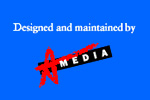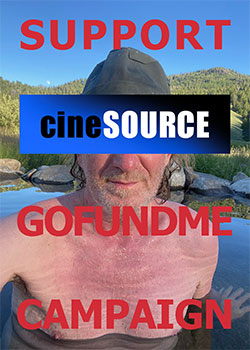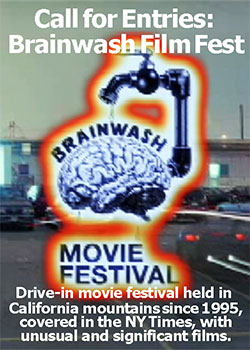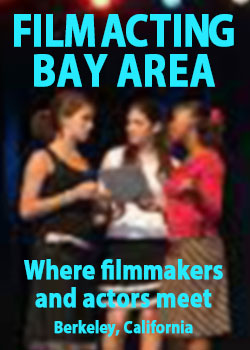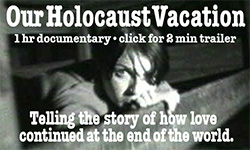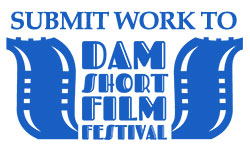Alt-Film at Fifty: The Many Faces of Canyon Cinema
by Doniphan Blair
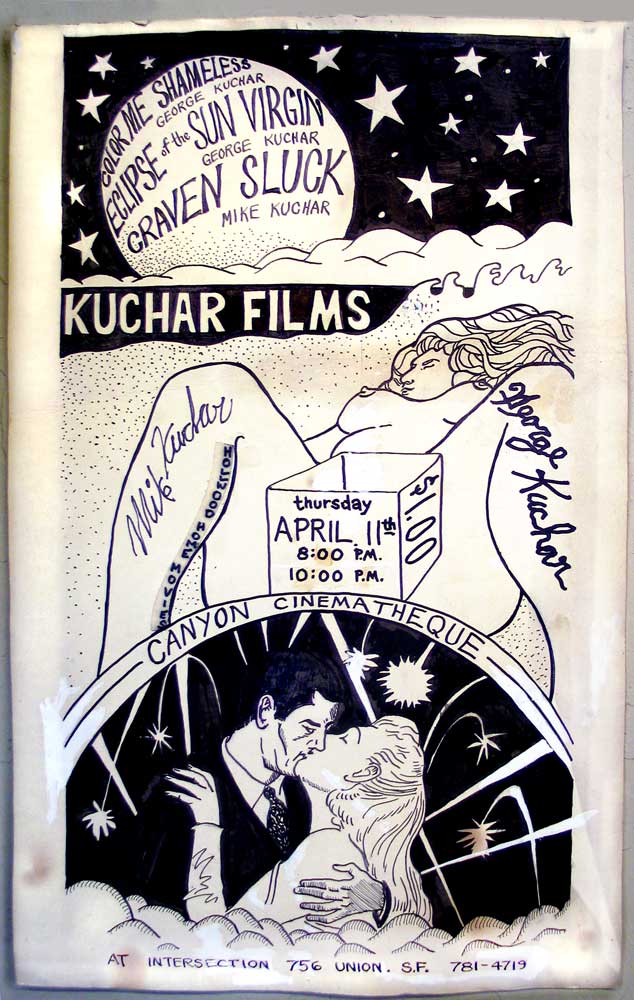 Camera-ready art for a Canyon Show at the Intersection with films by George and Mike Kuchar, circa 1969. photo: CanyonCanyon Cinema’s almost-50 anniversary celebration rolled through the Bay Area in September in a flurry of raucous, anti-establishment films, some ’60s nostalgia, and three great shows. Early in the month, there was one at Pacific Film Archives, which also had a screening for the publication of its first book, “Radical Light,” a monograph on local alternative cinema, where Canyon also looms large.
Camera-ready art for a Canyon Show at the Intersection with films by George and Mike Kuchar, circa 1969. photo: CanyonCanyon Cinema’s almost-50 anniversary celebration rolled through the Bay Area in September in a flurry of raucous, anti-establishment films, some ’60s nostalgia, and three great shows. Early in the month, there was one at Pacific Film Archives, which also had a screening for the publication of its first book, “Radical Light,” a monograph on local alternative cinema, where Canyon also looms large.
Then there was the Canyon retrospective at the Museum of Modern Art, on September 23, with three filmmakers in attendance. And the next day, Canyon, California, itself, where the cute little public school hosted a show replete with opening band, screening under the full moon, and Bruce Baillie, who produced the seminal screening and founded Canyon Cinema, leading to the area’s first film magazine and a distribution collective. As it happened, Baillie turned 79 that night.
“I was such a butterfly running around, I didn’t get to see the whole show,” Baillie told me, a week later, when I called him at his house on an island in the Puget Sound. “But, just looking at the screen and how they set it up it, it was so much better then our original. I have been thinking about Canyon, something was wonderful about it.”
 Despite being exhausted from travel, insomnia and the fact it was his actual birthday, Bruce Baillie enjoyed himself at the Canyon Show at the Canyon, California, public school. photo: D. BlairActually, it was a half a mile up the hill where Baillie hung his army surplus cloth in 1961 but, aside from the improved screen and different location, the show’s sponsers, SF Cinematheque, the Exploratorium, and Pacific Film Archives, went the extra mile to reproduce a typical Canyon show. It was freewheeling, attended by local kids and families as well as cineastes and artists, prizes where given, just as in the early days, and it followed the Canyon tradition of just splicing the films together ad hoc—more on that later.
Despite being exhausted from travel, insomnia and the fact it was his actual birthday, Bruce Baillie enjoyed himself at the Canyon Show at the Canyon, California, public school. photo: D. BlairActually, it was a half a mile up the hill where Baillie hung his army surplus cloth in 1961 but, aside from the improved screen and different location, the show’s sponsers, SF Cinematheque, the Exploratorium, and Pacific Film Archives, went the extra mile to reproduce a typical Canyon show. It was freewheeling, attended by local kids and families as well as cineastes and artists, prizes where given, just as in the early days, and it followed the Canyon tradition of just splicing the films together ad hoc—more on that later.
Baillie, looking good and very much the cowboy artist, related some wild anecdotes, about filmmaking, flying B-25 dreams, and back window liaisons. He also mentioned suffering from insomnia, dislocating travel, and modest incomes—ah, the liabilities of old age. He wasn’t overjoyed being reminded of his birthday but he was happy to be out and about, making the rounds with his films.
“My main reason for starting all this [filmmaking],” Baillie said, “Was to find my way of connecting with the world. I was in my mid-late 20s, adventuring all over the world, as all young people do, looking for some medium that would be my ‘thing,’ my connector. The farmer plants the seed and does the harvest and the poet does the same. It is still the same thing. You go out and connect. It was a great joy to be able to sit around, like we did the other evening [after the MOMA show], to joke and invent and have that kind of fun.”
At the MOMA show, Baillie shared the podium with his old friends the filmmakers Lawrence Jordan (a co-founder at Canyon), and Robert Nelson (also husband of filmmaker Gunvor, as well as bane of local indie feature director Rob Nilsson, who reverted to the Norwegian version of his name to distinguish himself). Alas, the auditorium was only a little over half full, a stark reminder of what Jordan said in his introductory remarks: “These films were shown to 100s and sometimes 1000s of people on college campuses and in small theaters all over the world.”
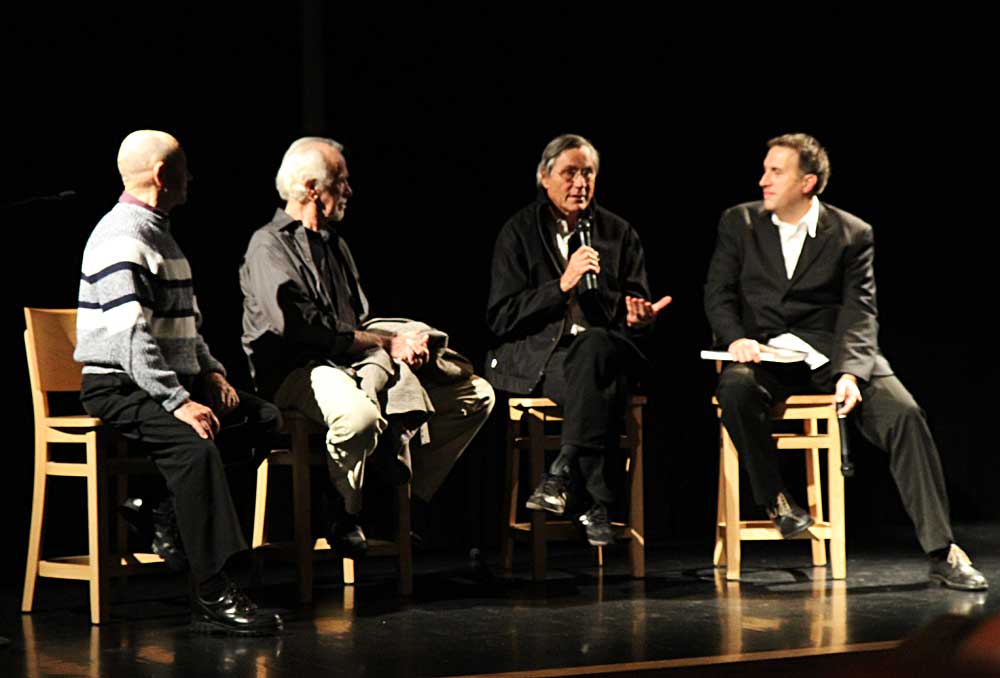 At the MOMA Show (left-right), filmmakers Bruce Baillie, Robert Nelson, and Lawrence Jordan, and Jonathan Marlow, San Francisco (formerly Canyon) Cinematheque director. photo: D. BlairThe fact that there were fewer today suggests A) poor publicity, B) we don’t honor our pioneers, C) they’ve won the field so completely no additional validation is needed. Evidently, the television cameramen, music video producers, and feature editors, who have stolen so much from the alt-filmmakers—from “jiggle-cam” to psychedelic mise en scénes, rapid cutting, and step printing (as Picasso recommended good artists do)—decided not to show up and blow their cover.
At the MOMA Show (left-right), filmmakers Bruce Baillie, Robert Nelson, and Lawrence Jordan, and Jonathan Marlow, San Francisco (formerly Canyon) Cinematheque director. photo: D. BlairThe fact that there were fewer today suggests A) poor publicity, B) we don’t honor our pioneers, C) they’ve won the field so completely no additional validation is needed. Evidently, the television cameramen, music video producers, and feature editors, who have stolen so much from the alt-filmmakers—from “jiggle-cam” to psychedelic mise en scénes, rapid cutting, and step printing (as Picasso recommended good artists do)—decided not to show up and blow their cover.
Cinema was such a pervasive spectacle for the first half of the 20th century that when its avant-garde started attracting audiences in the late 1950s, it truly did break molds and blow minds. It is easy to see how Nelson’s “Confessions of A Black Mother Succuba,” which the Museum showed, with its heavy cutting, prevailing nudes, and chiaroscuro, challenged the establishment in 1965, but also why Nelson noted that he wanted to re-cut it, or Dominic Angerame, the current director of Canyon Cinema, called it one of his worst films.
Although “Succuba” was historically correct, since the ’60s were suffused with sexual imagery, it is so full of female flesh, as was Nelson's “Penny Bright and Jimmy Witherspoon,” immediately following, that the sum total could give the wrong impression. “Waterfall,” a high-contrast, step-printed, tour de force, by Chick Strand, one of the fewer women among the avant-gardists, stood up well, but how about including some more lyrical films also indicative of the day? Similarly, the Canyon show ended with Michelle Silva’s “China Girls,” (2006, 3 min), and Timoleon Wilkins’s “MM” (1996, 6 min). Although both good, they paralleled each other in their use of film lab imagery — color tests, overexposed edge numbers, and the like — which made them repetitive.
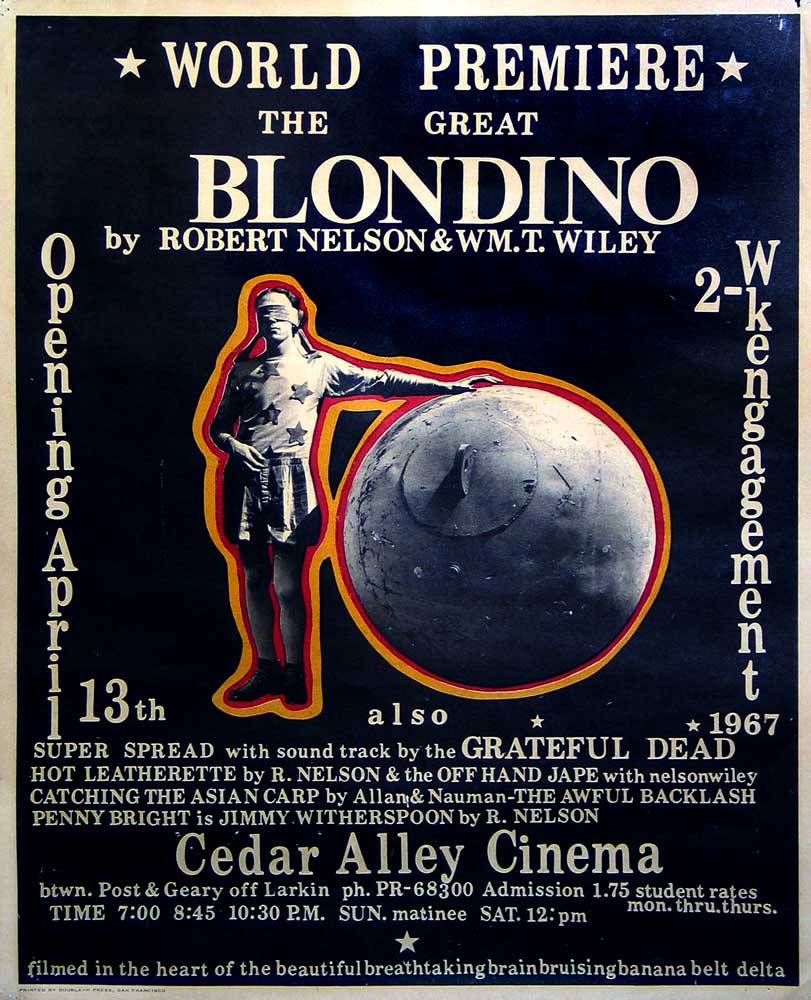 Poster for the world premiere of "The Great Blondino," by Robert Nelson and his sometime collaborator, the painter William T. Wiley, circa 1967. photo: courtesy Canyon Cinema.“I was thinking today about film shows and my analogy was how paintings are curated,” Baillie told me, which led to a discussion of these issues. My point is, not that these three shows were poorly curated, but if classical avant-garde cinema wants to draw the kids, it needs to use modern display, just like any museum. Aside from good projection and screen, which goes without saying, displayers need to make the material cogent and contemporary: notably through film order, attention to narrative arc, since shows are almost always collections of shorts, and by not going too long. Sure, Canyon’s ad hoc show arrangement was a lovely anarchist tradition, but today we need a different curatorial vision.
Poster for the world premiere of "The Great Blondino," by Robert Nelson and his sometime collaborator, the painter William T. Wiley, circa 1967. photo: courtesy Canyon Cinema.“I was thinking today about film shows and my analogy was how paintings are curated,” Baillie told me, which led to a discussion of these issues. My point is, not that these three shows were poorly curated, but if classical avant-garde cinema wants to draw the kids, it needs to use modern display, just like any museum. Aside from good projection and screen, which goes without saying, displayers need to make the material cogent and contemporary: notably through film order, attention to narrative arc, since shows are almost always collections of shorts, and by not going too long. Sure, Canyon’s ad hoc show arrangement was a lovely anarchist tradition, but today we need a different curatorial vision.
The Canyon show was excellent, aside from the above mentioned theme repeats, notably because it did feature a wide variety of films. Plus, it was en plen d’air, in what seemed like Big Sur but was only five miles from Oakland. Rock Ross, a filmmaker and one-time Canyon News contributor, led an opening band of filmmakers (Thad Povey, Chris Santeramo, Cecil Feeder, Dan Janos) called the Goat Family Jug Band. The screening started with Chuck Hudina’s beautiful slowmotion of a woman falling, “Ikarus,” (1973, 2 min), and included Angerame’s elegant and meditative “Deconstruction Sight” (1990, 12 min) as well as an impressionistic short piece, “Smokefarm,” by up-and-coming Milan Collins.
A perfect programming touch, for all of us but especially the school kids in attendance, was Max Fleisher’s “Ha! Ha! Ha!” (1934, 7 min). A hallucinatory Bettie Boop cartoon, it starts with her getting “drawn” into existence and ends with escaped dental laughing gas causing bridges and toasters to go hysterical. There was also Gunvor Nelson’s impressive “My Name Is Oona,” a portrait of her and Robert’s daughter (1969, 10 min).
It was also good programming to have the MOMA screening close with Jordan’s “Cosmic Alchemy.” As exuberant and mystical as any of his films, in the animation style he’s been doing for almost a half a century, it was a good sendoff back to reality with its eye popping color. It certainly completed the show’s monumental arc, which started with Baillie’s black and white “Here I Am” (1962).
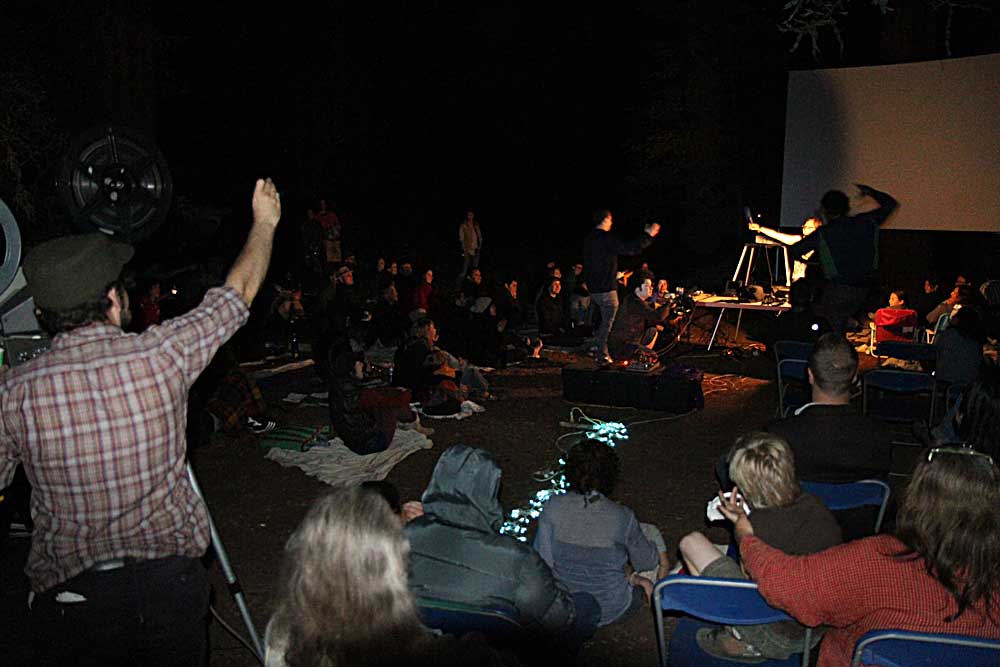 On top of being a dynamic and diverse screening under the stars, the Canyon Show featured funny contests and prizes, just as the original Canyon did 50 years ago. Here a joke award is being given. photo: D. BlairAbout the East Bay Activities Center for the emotionally disturbed, “Here I Am” opens with dreamy foggy road shots, segues into semi-documentary, and reaches a gentle epiphany about these slightly skewed souls. Evidently, Baillie made a bunch of faux news reels like “Here I Am.” MOMA also showed “Castro Street” (1966), one his best known pieces, which looked good, despite being faded from the colorful glory I still recall from my first viewing in 1974.
On top of being a dynamic and diverse screening under the stars, the Canyon Show featured funny contests and prizes, just as the original Canyon did 50 years ago. Here a joke award is being given. photo: D. BlairAbout the East Bay Activities Center for the emotionally disturbed, “Here I Am” opens with dreamy foggy road shots, segues into semi-documentary, and reaches a gentle epiphany about these slightly skewed souls. Evidently, Baillie made a bunch of faux news reels like “Here I Am.” MOMA also showed “Castro Street” (1966), one his best known pieces, which looked good, despite being faded from the colorful glory I still recall from my first viewing in 1974.
Perhaps Baillie can restore the color to “Castro” after he completes his current project, the pricey digital restoration of his hour-long “Quick Billy,” assisted by Ross Lipman, the UCLA film archivist, who is writing the DVD liner notes, and the Lucas Foundation. “Quite often when our films are shown with ‘real’ movies,” Baille said, “Theirs are shown uptown but ours are around the corner at the donut shop,” but here one of the ‘real’ filmmakers was returning the favor.
“When I got back to working on ‘Quick Billy,’ I thought of Truman Capote living in a hotel, in order to concentrate better. I declared to the family I will probably be out of it for about half the time. But it is coming along really well.” As well as his wife, Baillie lives with his son Keith, 13, whom he calls Bob (“When he was little, he said wanted to be called Bob”), and 21 year-old daughter, Wind. “Bob is interested in filmmaking, but I don’t know what angle yet.”
Unfortunately, Baillie is plagued by Chronic Fatigue Immune Dysfunction syndrome (“not a good name for it,” he conceded with a chuckle), which inhibits a decent night’s sleep, sometimes, any sleep at all, and concentration.
“‘We are all tired,’ is a common response,” he said, “But that is misleading. What would you think of being dropped regularly into a ‘Hyde State’ [as in ‘Dr. Jekyll and Mr.] where you are grabbing at the straws of existence like a wounded dinosaur? Where you have to respond to police officers asking, ‘Are you alright Mr.?’ You loose those things that make you human, the ability to discriminate about your own behavior in respect to society. It is very interesting to try and function without that ability and not get arrested every time you go out the door. You may be able to fly for a few hours but, like Cinderella, you better be back before the pumpkin.” Despite this condition, which is not unlike that of an obsessed artist, Baillie keeps at his projects by sheer force of will.
“St Augustine called his envelope his donkey body. I still have an old Mercedes which runs like champ, perhaps I should shift to that as a metaphor for my body. For my energy these days, I visualize a glass of water. I start the day full but at the end I'm incoherent. That is as far as my brain will go. When I use up my cup of water for the day, I take the dog for a walk, get my circulation going. Sure, the kidneys are starting to balk and the liver is starting to holler, but the mind is more important, can’t talk when it is sapped.”
And with that we bid our adieus, although Baillie’s many images and the Canyon au natural screening remained fresh in my mind.
Posted on Oct 06, 2010 - 12:23 AM
by Doniphan Blair
 Camera-ready art for a Canyon Show at the Intersection with films by George and Mike Kuchar, circa 1969. photo: Canyon
Camera-ready art for a Canyon Show at the Intersection with films by George and Mike Kuchar, circa 1969. photo: CanyonThen there was the Canyon retrospective at the Museum of Modern Art, on September 23, with three filmmakers in attendance. And the next day, Canyon, California, itself, where the cute little public school hosted a show replete with opening band, screening under the full moon, and Bruce Baillie, who produced the seminal screening and founded Canyon Cinema, leading to the area’s first film magazine and a distribution collective. As it happened, Baillie turned 79 that night.
“I was such a butterfly running around, I didn’t get to see the whole show,” Baillie told me, a week later, when I called him at his house on an island in the Puget Sound. “But, just looking at the screen and how they set it up it, it was so much better then our original. I have been thinking about Canyon, something was wonderful about it.”
 Despite being exhausted from travel, insomnia and the fact it was his actual birthday, Bruce Baillie enjoyed himself at the Canyon Show at the Canyon, California, public school. photo: D. Blair
Despite being exhausted from travel, insomnia and the fact it was his actual birthday, Bruce Baillie enjoyed himself at the Canyon Show at the Canyon, California, public school. photo: D. BlairBaillie, looking good and very much the cowboy artist, related some wild anecdotes, about filmmaking, flying B-25 dreams, and back window liaisons. He also mentioned suffering from insomnia, dislocating travel, and modest incomes—ah, the liabilities of old age. He wasn’t overjoyed being reminded of his birthday but he was happy to be out and about, making the rounds with his films.
“My main reason for starting all this [filmmaking],” Baillie said, “Was to find my way of connecting with the world. I was in my mid-late 20s, adventuring all over the world, as all young people do, looking for some medium that would be my ‘thing,’ my connector. The farmer plants the seed and does the harvest and the poet does the same. It is still the same thing. You go out and connect. It was a great joy to be able to sit around, like we did the other evening [after the MOMA show], to joke and invent and have that kind of fun.”
At the MOMA show, Baillie shared the podium with his old friends the filmmakers Lawrence Jordan (a co-founder at Canyon), and Robert Nelson (also husband of filmmaker Gunvor, as well as bane of local indie feature director Rob Nilsson, who reverted to the Norwegian version of his name to distinguish himself). Alas, the auditorium was only a little over half full, a stark reminder of what Jordan said in his introductory remarks: “These films were shown to 100s and sometimes 1000s of people on college campuses and in small theaters all over the world.”
 At the MOMA Show (left-right), filmmakers Bruce Baillie, Robert Nelson, and Lawrence Jordan, and Jonathan Marlow, San Francisco (formerly Canyon) Cinematheque director. photo: D. Blair
At the MOMA Show (left-right), filmmakers Bruce Baillie, Robert Nelson, and Lawrence Jordan, and Jonathan Marlow, San Francisco (formerly Canyon) Cinematheque director. photo: D. BlairCinema was such a pervasive spectacle for the first half of the 20th century that when its avant-garde started attracting audiences in the late 1950s, it truly did break molds and blow minds. It is easy to see how Nelson’s “Confessions of A Black Mother Succuba,” which the Museum showed, with its heavy cutting, prevailing nudes, and chiaroscuro, challenged the establishment in 1965, but also why Nelson noted that he wanted to re-cut it, or Dominic Angerame, the current director of Canyon Cinema, called it one of his worst films.
Although “Succuba” was historically correct, since the ’60s were suffused with sexual imagery, it is so full of female flesh, as was Nelson's “Penny Bright and Jimmy Witherspoon,” immediately following, that the sum total could give the wrong impression. “Waterfall,” a high-contrast, step-printed, tour de force, by Chick Strand, one of the fewer women among the avant-gardists, stood up well, but how about including some more lyrical films also indicative of the day? Similarly, the Canyon show ended with Michelle Silva’s “China Girls,” (2006, 3 min), and Timoleon Wilkins’s “MM” (1996, 6 min). Although both good, they paralleled each other in their use of film lab imagery — color tests, overexposed edge numbers, and the like — which made them repetitive.
 Poster for the world premiere of "The Great Blondino," by Robert Nelson and his sometime collaborator, the painter William T. Wiley, circa 1967. photo: courtesy Canyon Cinema.
Poster for the world premiere of "The Great Blondino," by Robert Nelson and his sometime collaborator, the painter William T. Wiley, circa 1967. photo: courtesy Canyon Cinema.The Canyon show was excellent, aside from the above mentioned theme repeats, notably because it did feature a wide variety of films. Plus, it was en plen d’air, in what seemed like Big Sur but was only five miles from Oakland. Rock Ross, a filmmaker and one-time Canyon News contributor, led an opening band of filmmakers (Thad Povey, Chris Santeramo, Cecil Feeder, Dan Janos) called the Goat Family Jug Band. The screening started with Chuck Hudina’s beautiful slowmotion of a woman falling, “Ikarus,” (1973, 2 min), and included Angerame’s elegant and meditative “Deconstruction Sight” (1990, 12 min) as well as an impressionistic short piece, “Smokefarm,” by up-and-coming Milan Collins.
A perfect programming touch, for all of us but especially the school kids in attendance, was Max Fleisher’s “Ha! Ha! Ha!” (1934, 7 min). A hallucinatory Bettie Boop cartoon, it starts with her getting “drawn” into existence and ends with escaped dental laughing gas causing bridges and toasters to go hysterical. There was also Gunvor Nelson’s impressive “My Name Is Oona,” a portrait of her and Robert’s daughter (1969, 10 min).
It was also good programming to have the MOMA screening close with Jordan’s “Cosmic Alchemy.” As exuberant and mystical as any of his films, in the animation style he’s been doing for almost a half a century, it was a good sendoff back to reality with its eye popping color. It certainly completed the show’s monumental arc, which started with Baillie’s black and white “Here I Am” (1962).
 On top of being a dynamic and diverse screening under the stars, the Canyon Show featured funny contests and prizes, just as the original Canyon did 50 years ago. Here a joke award is being given. photo: D. Blair
On top of being a dynamic and diverse screening under the stars, the Canyon Show featured funny contests and prizes, just as the original Canyon did 50 years ago. Here a joke award is being given. photo: D. BlairPerhaps Baillie can restore the color to “Castro” after he completes his current project, the pricey digital restoration of his hour-long “Quick Billy,” assisted by Ross Lipman, the UCLA film archivist, who is writing the DVD liner notes, and the Lucas Foundation. “Quite often when our films are shown with ‘real’ movies,” Baille said, “Theirs are shown uptown but ours are around the corner at the donut shop,” but here one of the ‘real’ filmmakers was returning the favor.
“When I got back to working on ‘Quick Billy,’ I thought of Truman Capote living in a hotel, in order to concentrate better. I declared to the family I will probably be out of it for about half the time. But it is coming along really well.” As well as his wife, Baillie lives with his son Keith, 13, whom he calls Bob (“When he was little, he said wanted to be called Bob”), and 21 year-old daughter, Wind. “Bob is interested in filmmaking, but I don’t know what angle yet.”
Unfortunately, Baillie is plagued by Chronic Fatigue Immune Dysfunction syndrome (“not a good name for it,” he conceded with a chuckle), which inhibits a decent night’s sleep, sometimes, any sleep at all, and concentration.
“‘We are all tired,’ is a common response,” he said, “But that is misleading. What would you think of being dropped regularly into a ‘Hyde State’ [as in ‘Dr. Jekyll and Mr.] where you are grabbing at the straws of existence like a wounded dinosaur? Where you have to respond to police officers asking, ‘Are you alright Mr.?’ You loose those things that make you human, the ability to discriminate about your own behavior in respect to society. It is very interesting to try and function without that ability and not get arrested every time you go out the door. You may be able to fly for a few hours but, like Cinderella, you better be back before the pumpkin.” Despite this condition, which is not unlike that of an obsessed artist, Baillie keeps at his projects by sheer force of will.
“St Augustine called his envelope his donkey body. I still have an old Mercedes which runs like champ, perhaps I should shift to that as a metaphor for my body. For my energy these days, I visualize a glass of water. I start the day full but at the end I'm incoherent. That is as far as my brain will go. When I use up my cup of water for the day, I take the dog for a walk, get my circulation going. Sure, the kidneys are starting to balk and the liver is starting to holler, but the mind is more important, can’t talk when it is sapped.”
And with that we bid our adieus, although Baillie’s many images and the Canyon au natural screening remained fresh in my mind.
Posted on Oct 06, 2010 - 12:23 AM













